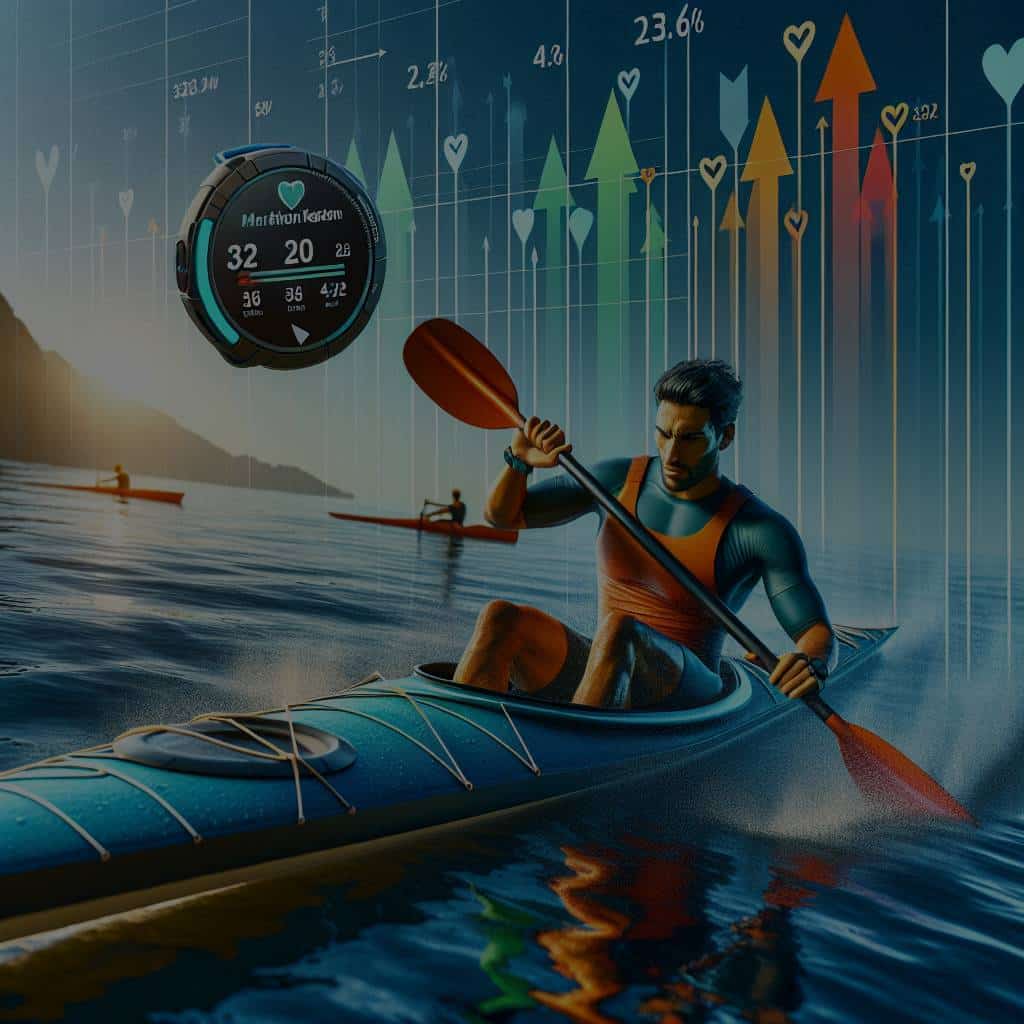Training for marathon kayaking is a demanding task that requires precise monitoring of your fitness level and performance. One of the most effective ways to measure these factors is through the use of heart rate monitors. These handy devices can help you determine the intensity of your exercise, enabling you to adjust your training accordingly. A heart rate monitor can provide valuable insights into your heart rate zone, paddling pace, and overall exercise intensity. However, understanding how to use this tool to its full potential can be challenging. In this article, we will explore how heart rate monitors can guide training intensity for marathon kayakers.
Understanding Heart Rate and Training Zones
The first step to harnessing the power of heart rate monitors is understanding what your heart rate signifies. At a basic level, your heart rate – the number of times your heart beats per minute – indicates how hard your body is working.
Additional reading : What Strategies Enhance Recovery from Tendon Injuries in Rock Climbers?
During exercise, your heart rate increases to supply more oxygen-rich blood to your muscles. By using a heart rate monitor, you can gauge the intensity of your workout and ensure it aligns with your fitness goals.
Heart rate training zones are a way to understand and measure the intensity of your workout. These zones range from Zone 1 (low intensity) to Zone 5 (maximum intensity). When you’re training, it’s important to know which zone you’re in, as this will help you optimize your performance and reach your fitness goals more effectively.
Have you seen this : What Are the Advanced Scouting Methods for Identifying Talent in College Basketball?
The Role of Heart Rate Monitors in Kayak Training
When it comes to marathon kayak training, heart rate monitors play a critical role. They provide a real-time snapshot of your workout intensity, allowing you to adjust your pace and effort as needed.
Training in the correct heart rate zone will ensure you’re working your body at the right intensity for your fitness level and goals. For instance, if your goal is to increase your endurance, you might aim to spend more time in zones 2 and 3. If you’re looking to boost your speed and performance, you might focus on training in zones 4 and 5.
A heart rate monitor can also guide your recovery periods. After a high-intensity workout, your heart rate should gradually decrease back to its resting rate. If it remains elevated, it could indicate that your body needs more time to recover.
Paddling Pace and Heart Rate
Your paddling pace, or the speed at which you paddle, significantly influences your heart rate. The faster you paddle, the higher your heart rate will be. However, it’s not just about paddling as fast as you can. A balanced approach that includes varying your paddling pace will help you enhance your performance over time.
A heart rate monitor can be instrumental in helping you identify your optimal paddling pace. The goal is to find a pace that allows you to maintain a consistent, manageable heart rate. This pace should be sustainable for long periods, as required in marathon kayaking.
High-Intensity Interval Training and Heart Rate
High-Intensity Interval Training (HIIT) is a type of training that alternates between bouts of intense exercise and periods of less-intense activity or rest. This type of training can be particularly effective for marathon kayakers as it can help improve cardiovascular fitness, endurance, and overall performance.
A heart rate monitor can offer valuable feedback during HIIT workouts. By observing your heart rate during the high-intensity intervals and recovery periods, you can ensure you’re working at the appropriate intensity. Plus, you can adjust your effort level as needed to remain within your target heart rate zone.
Utilizing Heart Rate Data to Increase Performance
Heart rate monitors do more than just track your heart rate. They collect data that you can analyze to gain insights into your training and performance. Over time, this data can help you identify trends, track progress, and make informed decisions about your training plan.
For instance, if you notice that your heart rate is consistently higher than usual for a given workout intensity, it might indicate that your body is under stress or not fully recovered from a previous training session. Conversely, a lower than usual heart rate at a given workout intensity might suggest that your fitness level has improved.
In summary, heart rate monitors are a valuable tool for marathon kayakers. They provide essential insights into your workout intensity, helping you adjust your training to achieve your performance goals.
Kayak Ergometer Training and Heart Rate Monitors
A kayak ergometer is a unique piece of equipment designed for indoor kayaking training. It simulates the paddling movement and resistance experienced on the water, making it an excellent tool for improving one’s kayaking performance. Integrating a heart rate monitor during your ergometer sessions can help you monitor your training intensity and ensure that you’re working within your target heart rate zones.
During a typical ergometer session, your heart rate may fluctuate based on the resistance level and the speed at which you’re paddling. By observing your heart rate while adjusting these variables, you can identify your optimal resistance level and paddling speed that best align with your training goals.
For example, to improve your anaerobic power, you might use the ergometer to perform high-intensity interval training (HIIT). During the high-intensity intervals, you would aim to reach your maximum heart rate, and during the recovery periods, you would allow your heart rate to return to a low intensity. The heart rate monitor will assist you in determining the appropriate intensity and duration for each interval, ensuring that you’re pushing your limits without overexerting yourself.
Remember, a well-planned ergometer session should encompass a balanced mix of high-intensity and low-intensity training. This variety keeps your body challenged, preventing it from adapting to a specific pattern and plateauing. More importantly, the heart rate monitor ensures that your training intensity aligns with your fitness level and progress, allowing for safer and more efficient training.
Resistance Training and Heart Rate Monitoring
Resistance training, a type of strength training, is another crucial aspect of marathon kayaking preparation. It involves exercises that cause muscles to contract against an external resistance, enhancing muscular strength, endurance, and power. Utilizing a heart rate monitor during resistance training can offer valuable insights into your training intensity and recovery.
Training with resistance can be demanding, causing your heart rate to increase significantly. By monitoring your heart rate during these sessions, you can determine if you’re pushing your limits or if there’s room for a bit more intensity.
For instance, while performing high-intensity resistance exercises, your heart rate may reach the higher zones. Observing this indicator allows you to maintain controlled intensity, reducing the risk of overtraining or injury.
Moreover, tracking your heart rate post-workout can provide insights into your recovery. Your resting heart rate, which should gradually decrease to its normal rate post-workout, can be an indicator of overtraining if it remains elevated for too long.
In essence, a heart rate monitor can guide the intensity and recovery during resistance training, helping you balance the benefits of strength training with the need for adequate recovery.
Conclusion
Training for marathon kayaking can be a physically demanding and complex task. It requires careful planning, a variety of training techniques, and precise monitoring of your fitness level and performance. The heart rate monitor emerges as a valuable tool in this context.
From helping you understand heart rate and training zones, guiding your kayak ergometer sessions, assisting in paced paddling, facilitating effective high-intensity interval training, to providing insights during resistance training – a heart rate monitor does it all.
As a marathon kayaker, understanding how to utilize this tool to its full potential can significantly enhance your training effectiveness. It allows you to customize your training intensity, ensuring it aligns with your current fitness level and specific goals.
Remember, the key to successful marathon kayaking training lies not just in the intensity of your workouts, but also in your ability to listen to your body and respond accordingly. The heart rate monitor provides you with the real-time data necessary to make informed decisions about your training plan, catapulting you towards your performance goals.











